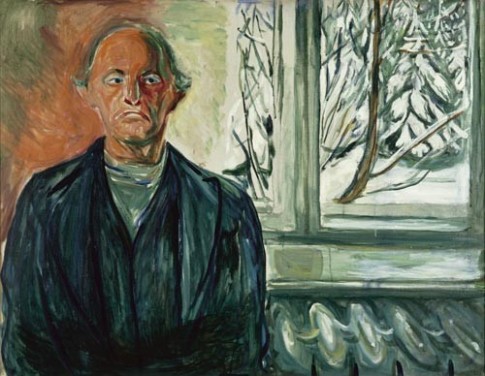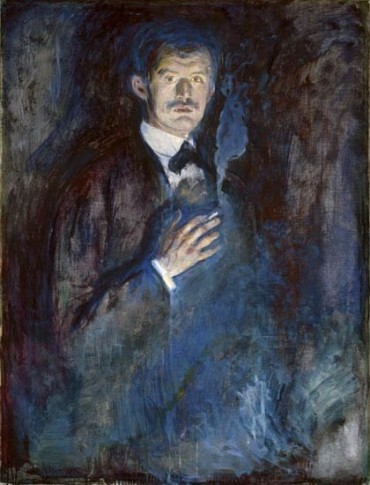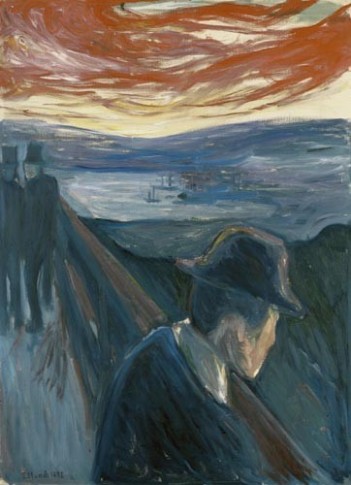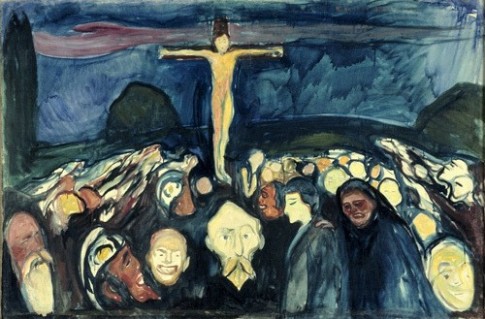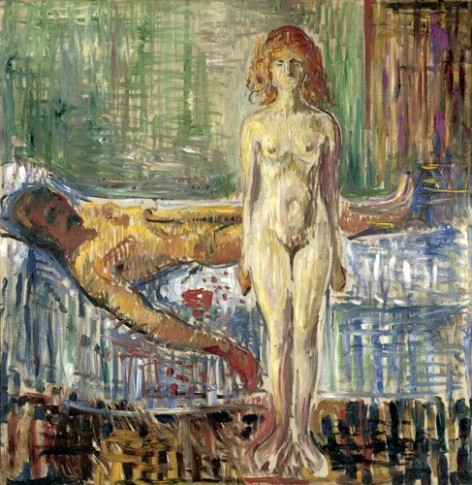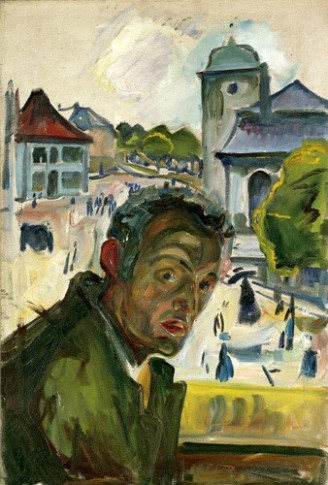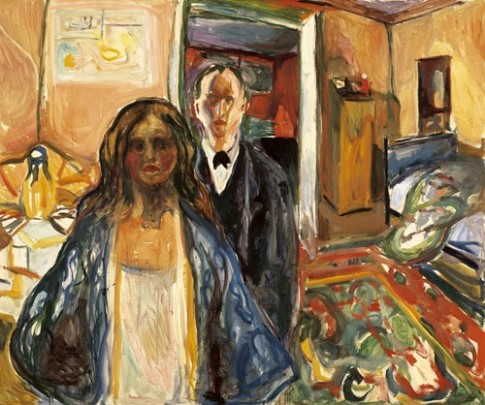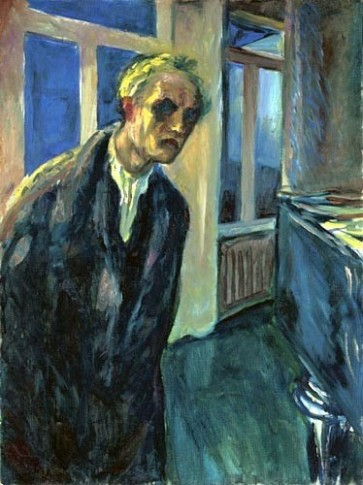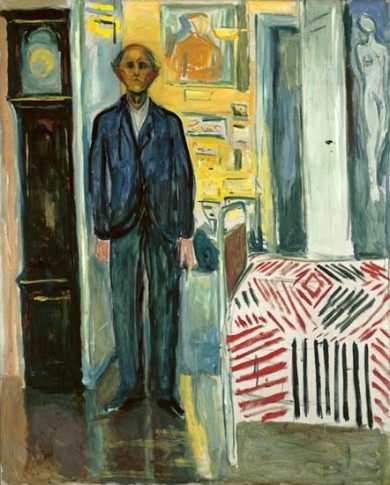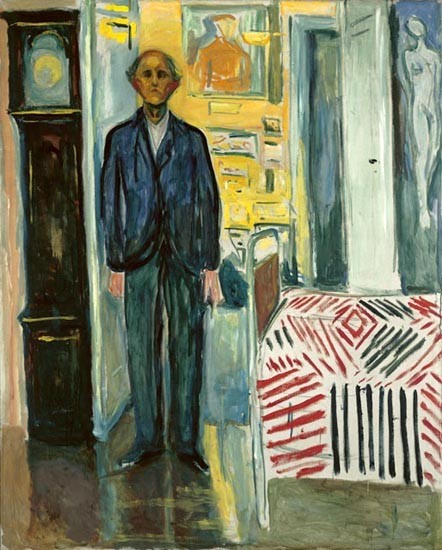
Edvard Munch, Self-portrait Between Clock and Bed, 1940-42 © Munch-museet/Munch-Ellingsen Gruppen/BUS 2005
Confronting death
In Self-portrait (1940-42), however, Munch is beginning to lose his vigour. His mouth is slack and his hair matted. Dying is characterised in this painting as the anxiety of losing control over one’s body. A shadow turns towards the light, while the ageing artist is still in a vague gloom.
In Self-portrait Between Clock and Bed (1940-42) the artist is on the brink of death. His time is up. The clock has no hands and the bed reminds us of the place where most people are born and die. His life, so full of work, now lies behind him. His senses barely register the outside world any more.
On 23 January, 1944, Munch’s life came to an end. The following day, the German painter Max Beckmann (1884-1950) wrote: “Munch has died- When will it be my turn? He held out for a pretty long time.”

